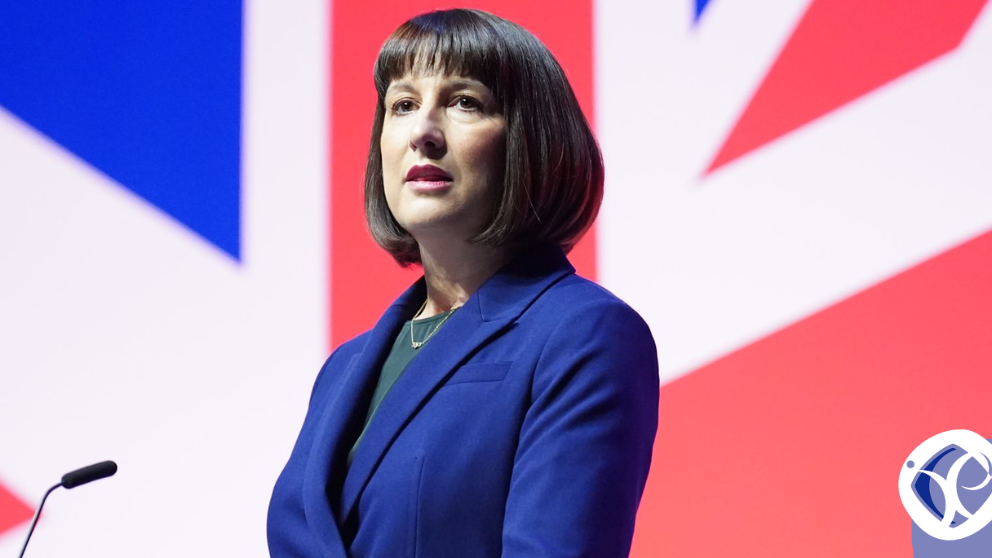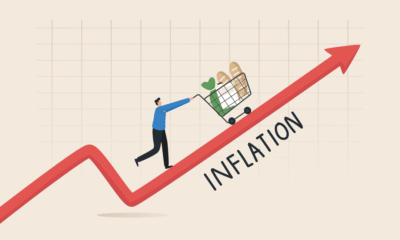Politics
European Defense Spending Increases: Economic and Market Implications

Introduction to Increased Defense Spending in Europe
In recent years, Europe has witnessed a significant shift in its defense spending trends, marking a pivot in military investment among various nations on the continent. This increase can be traced back to a confluence of historical, geopolitical, and economic factors that have shaped the current landscape. Traditionally, European countries have been characterized by lower military expenditures compared to their global counterparts, particularly the United States. However, the evolving security environment and rising threats have prompted these nations to reevaluate their defense budgets.
The geopolitical landscape, characterized by heightened tensions and uncertainty, has played a pivotal role in driving these increases. Events such as the annexation of Crimea by Russia in 2014 and ongoing conflicts in Eastern Europe have heightened perceived security threats. European nations have recognized the necessity to bolster their military capabilities to ensure national and collective security. Moreover, the commitments made under NATO have further catalyzed this escalation in defense spending, as member states strive to meet the alliance’s guideline of allocating at least 2% of their GDP to defense.
Motivations behind these budget increases extend beyond mere defense readiness. Increasing public awareness of national security issues, concerns about cyber threats, and the necessity to modernize aging military infrastructure have all contributed to the growing calls for enhanced defense outlays. Additionally, the rise of new technologies has spurred investments aimed at upgrading capabilities and ensuring readiness for modern warfare challenges.
This shift in defense spending not only has immediate implications for European security but also significantly influences economic dynamics and market trends across the region. As governments allocate higher funds for defense-related projects and procurement, it is essential to analyze the broader implications of these expenditures for both local economies and global markets.
Key Drivers of Increased Defense Budgets
In recent years, a notable trend has emerged among European nations: a marked increase in defense budgets. This shift can be attributed to several key drivers that reflect a changing geopolitical landscape, as well as internal national priorities. One of the primary factors leading to enhanced defense spending is the escalation of global tensions, particularly in relation to conflicts involving major powers. As countries witness an uptick in assertive military maneuvers from regional adversaries, the need for robust defense mechanisms has never been more pressing.
Additionally, the commitments made under NATO agreements play a pivotal role in shaping defense budgets across Europe. Member states have pledged to allocate at least 2% of their Gross Domestic Product (GDP) to defense expenditures, thereby necessitating adjustments in national budgets to fulfill these obligations. Countries that do not meet this benchmark often face scrutiny from their allies and pressure to enhance military preparedness. This external expectation adds impetus for governments to prioritize defense, reinforcing the trend of increasing military expenditure.
Furthermore, domestic politics significantly influences defense spending decisions. Many European nations are experiencing shifting political landscapes, where security issues have gained prominence amid public concerns regarding safety and national sovereignty. Politicians are increasingly responding to these calls by advocating for greater investments in defense capabilities. The interplay between public sentiment, political agendas, and economic considerations creates a multifaceted environment that shapes each country’s defense budget. Thus, it is clear that rising global tensions, NATO commitments, and domestic political pressures are key drivers behind the surging defense budgets seen throughout Europe today.
Economic Implications of Increased Defense Spending
The increase in defense spending across Europe carries significant economic implications that merit careful consideration. One of the most immediate effects is the potential rise in government debt. As nations allocate larger portions of their budgets to military expenditures, they may face fiscal challenges that necessitate borrowing. Increased debt levels can lead to higher interest payments, diverting funds away from other essential services and potentially stifling economic growth.
Another critical aspect to examine is the relationship between defense spending and GDP growth. Historical data suggests that while military investments can stimulate certain sectors of the economy—such as manufacturing and technology—the overall effect on GDP is complex. Increased defense spending may initially bolster economic activity; however, if such expenditures come at the expense of investments in infrastructure, education, or healthcare, the long-term growth potential could be compromised. By prioritizing military investments, countries might undermine their capability to foster innovation and increase productivity in other vital economic areas.
Moreover, the reallocation of public resources from social services to military investments raises questions about the broader societal impact. Essential services such as healthcare, education, and social welfare may experience budgetary cuts to accommodate defense spending increases. This shift can lead to public dissatisfaction and economic inequality, as marginalized communities may suffer disproportionately from reduced funding in areas crucial to their well-being. The social fabric of nations can be adversely affected, ultimately leading to longer-term economic challenges.
In light of these factors, it is imperative for policymakers to conduct a thorough assessment of the economic repercussions associated with increased defense spending. Balancing military needs with investment in social services will be crucial to maintaining a robust and sustainable economic environment while addressing security challenges effectively.
Market Opportunities for Defense Contractors
The recent increase in European defense spending presents significant opportunities for defense contractors and enterprises within the military-industrial complex. Governments across Europe, in response to various geopolitical challenges, have initiated substantial budget augmentations aimed at modernizing their armed forces and enhancing national security. This upward trend in defense expenditures consequently stimulates demand for innovative technologies and advanced military solutions, thus opening up new procurement contracts for defense contractors.
As countries invest more heavily in their defense capabilities, there is a marked emphasis on state-of-the-art systems, including advanced weaponry, cyber defense technologies, and next-generation surveillance systems. Contractors that are at the forefront of technological advancement stand to benefit from a growing market that seeks cutting-edge solutions. Specifically, firms specializing in artificial intelligence, robotics, and cybersecurity can find themselves well-positioned to secure lucrative contracts that promise not only immediate financial rewards but also long-term partnerships with government entities.
Job creation is another critical aspect spurred by this increase in defense budgets. As military expenditures grow, companies within the defense sector will likely expand their workforce to meet the rising demand for manpower. This can lead to a revitalization of local economies in regions where military contractors operate, presenting further opportunities for ancillary businesses. Additionally, as more funds flow into defense programs, the trickle-down effect may lead to increased investments in research and development, fostering innovation within the sector.
In conclusion, the rise in European defense spending heralds favorable conditions for defense contractors, fostering not only the potential for new procurement contracts and technological advancements but also contributing to job creation. By capitalizing on this shift in focus towards enhanced defense spending, contractors can secure their positions in a rapidly evolving market landscape.
Impact on European Economies and Trade Relations
In recent years, many European nations have significantly increased their defense spending, a trend driven by various geopolitical factors and security concerns. This uptick in defense expenditures is poised to have profound implications for European economies, particularly concerning economic growth in related sectors and the dynamics of trade relations both within and outside the European Union.
Increased investment in defense manufacturing and technology can stimulate job creation within these sectors. A robust defense industry not only creates direct employment opportunities but also spurs growth in ancillary industries, such as logistics, research and development, and cybersecurity. Countries investing heavily in their defense capabilities may witness a ripple effect, leading to economic growth across a broader spectrum of industries. This trend may enhance local supply chains, positively impacting overall economic performance as nations look to bolster their military capabilities.
Furthermore, these shifts in defense spending can influence trade balances significantly. On one hand, increased domestic production can reduce reliance on foreign suppliers, potentially leading to an improved trade balance. On the other hand, nations boosting their defense budgets may also result in higher imports of advanced technology and equipment from non-EU allies, complicating trade dynamics. This duality of effects can create a complex environment where nations must navigate their defense procurement strategies carefully while balancing domestic economic interests.
Finally, enhanced defense spending can strain relationships with non-EU countries, particularly those involved in defense supply chains. As European nations ramp up their military investments, they may seek to forge or enhance partnerships with countries beyond the EU, thus reshaping geopolitical alliances. Such realignment can lead to more significant cooperation in defense manufacturing, technology exchange, and strategic partnerships, thereby affecting global trade patterns and regional stability.
Regional Variations in Defense Spending Adjustments
Recent trends in European defense spending exhibit significant regional variations, as countries respond to evolving security challenges and geopolitical dynamics. Several nations are recalibrating their defense budgets, reflecting differing levels of commitment to military capabilities and established priorities. These adjustments not only highlight each nation’s perceptions of threat but also underscore the strategic imperatives driving their spending decisions.
In Northern Europe, nations such as Finland and Sweden have significantly increased their defense expenditure in response to heightened tensions with Russia. Both countries are focusing on enhancing their military capabilities, resulting in robust spending adjustments aimed at modernizing armed forces and improving readiness levels. The Nordic countries have recognized that joint military exercises and interoperability are essential, thus reflecting a regional commitment to collective security chains.
Conversely, Southern European nations, including Italy and Spain, are experiencing more restrained increases in their defense budgets. Economic challenges and prioritization of domestic issues often take precedence, leading to incremental adjustments in military funding. However, these nations are gradually recognizing the need for heightened defense expenditure, particularly in light of unrest in the Mediterranean region and the migration crises that have significant security implications.
Central and Eastern European nations, particularly those bordering Russia, such as Poland and the Baltic states, have taken a more aggressive stance regarding their defense budgets. These nations perceive a direct threat from Russian military activities, which has led to substantial increases aimed at enhancing deterrence capabilities through modernization programs and increased troop readiness. Their commitment to NATO obligations also reflects an understanding of the importance of collective defense frameworks.
Overall, the disparities in defense spending adjustments across Europe underscore the varying national priorities shaped by historical, political, and economic contexts. As countries navigate their security landscapes, these spending variations will play a crucial role in shaping the continent’s future defense posture.
Potential Risks and Challenges
The significant increases in defense spending across Europe present a range of potential risks and challenges that warrant careful consideration. One principal concern is the possibility of overspending. As countries allocate more resources to their militaries, there is a risk that budgets may extend beyond reasonable limits, diverting funds from essential social services such as healthcare and education. This overspending can lead to public dissatisfaction, particularly in nations where citizens prioritize domestic investment over military enhancements.
Moreover, public backlash against substantial military investments can create political ramifications. Citizens may express their discontent regarding funding allocations, especially if they perceive that military expenditures do not translate into improved national security or if they disrupt local economic priorities. This backlash can result in protests or shifts in political power that could impede the continuation of heightened defense budgets.
Another critical factor is the impact of economic downturns on future military budgets. The interdependence of economic health and defense spending means that in the event of a recession, countries may face pressure to reduce military outlays. This reduction could undermine efforts to modernize and maintain defense capabilities, leaving nations vulnerable to external threats. Economic instability can also foster political unrest, further complicating the governance of defense resource allocation. Countries may find themselves caught between the need for increased spending to address security threats and the demands of a financially strained populace.
Additionally, the challenges posed by political instability within and among nations can hinder coherent defense strategies. In an environment where governance is unstable, it becomes difficult to formulate long-term defense policies. This unpredictability may lead to fluctuating military budgets and strained alliances, impacting regional security dynamics. Addressing these risks will be essential for countries that are committed to boosting their defense capabilities while ensuring economic stability and maintaining public support.
Future Trends in European Defense Spending
The landscape of European defense spending is poised for significant evolution in the coming years. With geopolitical tensions in Eastern Europe and rising security challenges, European nations are increasingly recognizing the need to enhance their military capabilities. Projections indicate that defense budgets across the continent are likely to grow, with many countries aiming to meet or exceed the NATO target of 2% of GDP on defense. This trend is particularly evident among nations that have historically allocated lower budgets to military expenditure.
Additionally, shifts in defense policy are emerging as governments reassess their strategic priorities. The ongoing conflict in Ukraine has acted as a catalyst for many European nations to prioritize collective defense and readiness. Consequently, we may see a more unified approach toward defense initiatives, marked by increased collaboration for joint capabilities and resource sharing. The establishment of joint European defense programs may facilitate improved interoperability amongst member states, fostering a more cohesive defense strategy across the continent.
Technology and innovation will play a pivotal role in shaping future defense strategies. Advancements in areas such as artificial intelligence, cybersecurity, and unmanned systems are expected to transform military operations and procurement processes. European defense industries are likely to invest heavily in research and development to maintain a competitive edge in these critical domains. As nations increasingly prioritize modernization, procurement policies may evolve to emphasize technological integration, driving partnerships between the government and private sector.
In conclusion, as European defense spending continues to increase, the interconnected nature of economic and security considerations will shape its trajectory. The commitment to enhance military capabilities, surpass spending benchmarks, and embrace technological advancement will redefine the defense landscape in Europe, setting the stage for a more secure and collaborative future.
Conclusion
In recent years, the escalation of defense spending across Europe has become a prominent topic. Heightened geopolitical tensions and emerging security threats have necessitated a reevaluation of military expenditures. Throughout this discussion, we have examined the multifaceted relationship between increased defense budgets and overall economic stability within European nations. A balanced approach to defense spending is crucial to ensure that the urgent need for enhanced military preparedness does not come at the expense of vital economic investment and public welfare.
Strategic planning must underpin any increases in defense budgets. By prioritizing areas of critical national interest while ensuring sustainable economic growth, governments can create a framework that supports both military readiness and public prosperity. It is essential for policymakers to engage in comprehensive assessments that evaluate not just the immediate requirements for national defense, but also the long-term socio-economic ramifications of such spending. Investments in defense should ideally stimulate innovation and job creation, thereby fostering broader economic benefits that extend beyond the military sector.
The changing geopolitical landscape presents new challenges and opportunities for European countries. As nations increase their defense allocations, they must remain vigilant about the socio-economic environment that underpins their stability. This involves recognizing the need for flexibility in budgets and investments, preparing for uncertainties that may arise not only from external threats but also from shifts in global economic conditions. Ultimately, the synergy between defense spending and economic stability will be pivotal in shaping the future of Europe, requiring diligent foresight and balanced approaches to meet the demands of an ever-evolving security reality.

Politics
Chancellor Rachel Reeves Faces Fiscal Rule Challenges Amid Growth Concerns

Introduction to Chancellor Rachel Reeves
Rachel Reeves has emerged as a significant figure within the UK government, serving as the Chancellor of the Exchequer. A member of the Labour Party, she was appointed to this pivotal role amid a challenging economic landscape. Born on 6th February 1979 in Lewisham, London, Reeves’s early education took place at the prestigious University of Oxford, where she studied Philosophy, Politics, and Economics. Her academic background has provided her with a strong foundation for understanding the complexities of economic policy.
Before ascending to the role of Chancellor, Rachel Reeves held various positions within the shadow cabinet, showcasing her commitment to public service and her depth of knowledge in economic matters. She has consistently advocated for policies that aim to foster economic growth and social equity, making her stance on fiscal governance particularly important in today’s context. In her role, she is responsible for overseeing the UK’s economic strategy, managing the public finances, and ensuring fiscal responsibility, all while addressing pressing concerns related to growth and investment.
The economic climate Chancellor Reeves is navigating is marked by uncertainty, primarily due to external pressures such as inflation and the lingering effects of the COVID-19 pandemic. These factors have raised critical questions surrounding fiscal rules and debt management. Her key priorities involve stimulating economic growth, supporting job creation, and investing in public services, which she believes are essential to bolster the UK’s long-term fiscal health. As she confronts these issues, Reeves’s approach will likely shape not only her political legacy but also the broader economic trajectory of the United Kingdom in the years to come.
Current Economic Landscape in the UK
The current economic landscape in the United Kingdom is characterized by a complex interplay of various factors affecting growth, inflation, and employment. Economic growth in the UK has shown signs of stagnation, with the latest reports indicating a modest rise in GDP. However, these figures are overshadowed by persistent inflationary pressures that continue to challenge households and businesses alike. As of recent data, inflation rates have remained elevated, driven largely by rising energy costs and supply chain disruptions stemming from global events. This persistent inflation challenges the government’s ability to implement fiscal policies that foster sustainable economic growth.
In terms of employment, the job market has experienced fluctuations that mirror the broader economic challenges. While unemployment rates have stabilized, the quality of job creation has come under scrutiny, with many positions offering lower wage growth than seen in previous years. Furthermore, the rise of part-time and casual work has contributed to concerns regarding job security and the overall economic stability for workers across various sectors. These factors make it increasingly difficult for Chancellor Rachel Reeves to navigate fiscal policies that would stimulate growth and alleviate inflationary pressures.
The government’s fiscal policy must respond to these economic conditions with a balanced approach. On one hand, there is a pressing need for investment in key sectors, such as technology and green energy, to drive growth and innovation. On the other, controlling inflation through prudent fiscal management is crucial to maintaining public confidence and economic stability. As Reeves faces these challenges, her ability to craft a cohesive fiscal strategy will be paramount in restoring the UK’s economic resilience amid a tumultuous global landscape.
Understanding Fiscal Rules
Fiscal rules are guidelines that dictate how governments manage their financial operations, including spending, taxation, and borrowing. These rules are critical in ensuring that public finances are maintained sustainably and that the economy is governed effectively. By establishing clear parameters for fiscal management, these rules promote transparency and accountability, fostering a stable environment for economic growth. They serve to prevent excessive public borrowing, which could lead to long-term detrimental effects on the economy.
The importance of fiscal rules lies in their capacity to guide the behavior of policymakers. When implemented correctly, they can enhance the credibility of government commitments to fiscal discipline. This credibility is essential for maintaining investor confidence, as it assures creditors and citizens that the government is committed to sound financial practices. As such, fiscal rules are not just theoretical constructs; they possess practical implications that can significantly influence a nation’s economic trajectory.
In addition to fostering financial responsibility, fiscal rules also play a vital role in promoting economic growth. A well-defined fiscal framework encourages productive investment by limiting the risks associated with public debt. When governments adhere to fiscal rules, they can avoid inflationary pressures caused by excessive borrowing, leading to a more stable economic environment. This stability is vital for attracting both domestic and foreign investment, ultimately contributing to enhanced growth prospects.
Furthermore, fiscal rules can assist in aligning government priorities with long-term economic goals. By stipulating targets for budgetary balance or public debt, these rules ensure that short-term political incentives do not undermine fiscal sustainability. In conclusion, fiscal rules are essential tools for effective financial management, promoting both accountability and economic growth. Through their careful implementation, governments can create a more predictable and secure economic landscape, benefiting citizens and investors alike.
The Challenges Ahead for Fiscal Policy
Chancellor Rachel Reeves is poised to navigate a complex landscape marked by significant challenges in fiscal policy. As she implements her fiscal rules, the pressing task lies in striking a delicate balance between stimulating economic growth and ensuring fiscal responsibility. This balance is particularly crucial in light of mounting national debt levels, raising concerns about the sustainability of fiscal measures.
One of the primary challenges Reeves will face is the economic impetus required to foster growth while adhering to the stringent fiscal rules that govern public spending and borrowing. Economic growth is a vital component of enhancing tax revenues, which in turn can facilitate the reduction of deficit levels. However, this growth may necessitate increased public expenditure—an area traditionally scrutinized under fiscal rules. Striking this balance effectively requires strategic planning and an acute awareness of the repercussions of both expansionary and contractionary fiscal policies.
Another challenge is the potential backlash against fiscal austerity measures that could be perceived as detrimental to growth. As the government weighs options to rein in spending, there exists a risk that excessive austerity could stifle demand in the economy, leading to a vicious cycle where growth is jeopardized. Meanwhile, fiscal rules must ensure that spending is directed toward projects and sectors that are capable of yielding significant economic benefits in the long term. Prioritizing investment in infrastructure, education, and innovation will be critical to achieving sustainable growth without exacerbating debt levels.
In conclusion, Chancellor Reeves faces formidable challenges as she addresses the intricacies of fiscal policy. The dual goal of promoting economic stability while enacting responsible fiscal measures demands balanced, forward-thinking strategies that align with the overarching needs of the economy.
Public and Political Reactions
As Chancellor Rachel Reeves unveils her proposed fiscal rules, reactions from the public and political spheres have been mixed, underscoring the complexities surrounding her approach to fiscal policy. Economists have presented divergent perspectives; some commend Reeves for prioritizing sustainable fiscal practices while others express concerns over potential impacts on economic growth. In a recent statement, a leading economist argued that while fiscal prudence is necessary, it should not come at the expense of investment in critical areas such as infrastructure and education.
Political opponents have seized the opportunity to critique Reeves’ fiscal approach, arguing that her rules may stifle economic opportunity. Members of the opposition have indicated that the proposed measures lack flexibility and could hinder the government’s ability to respond effectively to economic fluctuations. They assert that strict fiscal rules may lead to austerity, a concern echoed by various public figures who warn against repeating the mistakes of the past. A former government advisor highlighted the potential dangers of an overly rigid fiscal framework, stating that adaptive strategies are vital in an unpredictable economic landscape.
Public sentiment reflects this dichotomy as well, with ordinary citizens expressing a range of opinions. Some support the Chancellor’s commitment to fiscal responsibility, viewing it as a necessary step toward stabilizing the economy, especially in light of recent inflationary pressures. Conversely, others worry that prioritizing strict fiscal rules may result in detrimental cuts to vital services, particularly in healthcare and education. This tension underscores the broader debate within society about the balance between fiscal discipline and economic growth, emphasizing the intricate dynamics that accompany the development of public policy.
As the discourse unfolds, it remains evident that Chancellor Reeves will need to navigate these varied opinions carefully to foster both public trust and political support for her fiscal framework.
Comparative Analysis with Previous Chancellors
As Chancellor Rachel Reeves navigates the complexities of fiscal policy, a comparative analysis with her predecessors offers valuable insights into her approach to economic growth and fiscal discipline. The role of the Chancellor has historically involved balancing the promotion of growth while ensuring fiscal responsibility, a dual mandate that has seen varying degrees of success among those who held the office before her.
One notable contrast can be drawn between Reeves’ fiscal strategy and that of Gordon Brown, whose tenure is marked by significant investments in public services aimed at stimulating economic growth. Brown’s policies included substantial public spending, financed through both taxation and borrowing, to foster expansion during a global economic boom. In contrast, Reeves has emphasized the need for a more cautious fiscal approach, prioritizing sustainable growth over immediate expenditure increases, which reflects lessons learned from the economic downturns that plagued her predecessors.
Furthermore, the tenure of George Osborne serves as another pivotal reference point. Osborne’s commitment to austerity measures aimed to restore fiscal balance through rigorous spending cuts and tax reforms. While these measures resulted in reduced budget deficits, they stoked debates regarding their impact on long-term economic growth and public services. Reeves appears to be steering a course that seeks to learn from both the successes and failures of these policies, advocating for a balanced approach that considers the necessity of investment against the backdrop of fiscal prudence.
In essence, Rebecca’s fiscal policies are being shaped by historical precedents, where the emphasis is on cautiously navigating the path of growth while maintaining fiscal discipline. This intricately woven tapestry of past strategies underscores the challenges that contemporary Chancellors face and emphasizes the significance of adopting a nuanced approach to fiscal governance.
Economic Forecasts: What Lies Ahead
As the UK grapples with ongoing economic uncertainties, experts are predicting a nuanced landscape for the coming years. Growth rates, a vital indicator of economic health, are forecasted to remain subdued. The Bank of England, alongside various economic research institutions, has projected that the UK’s gross domestic product (GDP) may grow at a rate of approximately 1% to 1.5% annually over the next few years. This restrained growth comes in the wake of higher inflation rates and global economic pressures, which could limit consumer spending and business investment.
Unemployment trends are also crucial in shaping the fiscal strategy of Chancellor Rachel Reeves. Current forecasts suggest that the unemployment rate may hover around 4% to 5%, with certain sectors experiencing tighter labor markets while others could face challenges due to a skills mismatch. As companies adjust to a post-pandemic environment and contemporary economic realities, it is essential to monitor these shifts to assess their implications for public policy and economic stability.
Inflation continues to be a significant concern for the UK economy. Although recent indicators show signs of moderation, inflation rates remain above the Bank of England’s target of 2%. Experts anticipate that monetary policy measures, such as interest rate adjustments, will play a pivotal role in curbing inflation and stabilizing the economy. Additionally, geopolitical factors, such as trade relationships and energy prices, will significantly impact domestic economic conditions.
The forecasts indicate that these economic challenges will require pragmatic fiscal strategies from the Treasury. Chancellor Reeves must navigate a landscape where fiscal discipline is paramount, alongside the necessity of stimulating growth and safeguarding employment. Such a delicate balance will be crucial as the government looks to foster a resilient economy amidst fluctuating global influences.
Potential Policy Solutions and Innovations
As Chancellor Rachel Reeves navigates the complexities of fiscal rules while striving to promote economic growth, several policy solutions and innovations warrant consideration. Addressing the delicate balance between maintaining fiscal discipline and stimulating growth is crucial for sustainable economic progress. One approach could be a reformation of the taxation system to enhance efficiency and fairness. This could involve simplifying tax structures, thereby reducing compliance costs and fostering greater investment. Adjusting tax incentives for sectors that drive innovation, such as technology and renewable energy, might catalyze economic expansion while adhering to fiscal constraints.
Moreover, targeted public spending that prioritizes high-impact infrastructure projects could serve dual purposes. By improving transportation networks, energy systems, and digital connectivity, the government can stimulate job creation in the short term while positioning the economy for growth in the long term. Investments in education and skill development are equally paramount; aligning the workforce’s skillset with the demands of a rapidly evolving economy will ensure that citizens remain employable and contribute to economic resilience.
Investment in public-private partnerships offers another innovative route. These partnerships can leverage private sector expertise and funding to complement public resources, facilitating large-scale projects that might otherwise be unfeasible within strict fiscal confines. This model not only enhances efficiency but may also accelerate project delivery timelines, ultimately contributing to economic vitality.
Furthermore, exploring new financial instruments such as green bonds can provide avenues for funding sustainable projects. By tapping into socially responsible investing, the government can align fiscal policies with societal needs and environmental goals, which could stimulate economic growth while reinforcing fiscal stability. By integrating these strategies, Chancellor Reeves can undertake a balanced approach that fosters growth amidst the challenges of fiscal regulation.
Conclusion
As Chancellor Rachel Reeves confronts the multifaceted challenges posed by fiscal rules amidst ongoing growth concerns, several key takeaways emerge that illuminate the path forward. The current economic landscape of the UK necessitates a robust approach to fiscal policy, taking into account not only short-term pressures but also long-term growth prospects. The importance of flexibility in economic policy-making cannot be overstated, especially given the unpredictable nature of global markets and domestic economic variables.
Chancellor Reeves must prioritize creating a balance between adhering to fiscal rules and fostering an environment conducive to growth. This could entail reevaluating existing fiscal frameworks to incorporate adaptability allowing for timely responses to economic fluctuations. The emphasis should be placed on promoting investment, supporting innovation, and enhancing productivity, which together can lead to sustainable economic growth. The stakes are high; inadequate policy responses could exacerbate current challenges, leading to a broader economic downturn.
Moreover, the implications of Reeves’ decisions extend beyond immediate fiscal measures, influencing public confidence and investment sentiment within the UK. The call for transparent communication and clear long-term strategies is paramount, as citizens and investors alike seek assurance in the government’s commitment to a stable economic future. By effectively communicating her vision and the rationale behind any adjustments to fiscal rules, the Chancellor can cultivate trust among stakeholders.
Ultimately, the challenges facing Chancellor Reeves represent not only a test of her leadership but also an opportunity to redefine the contours of fiscal policy in the UK. Emphasizing adaptive policy-making in the face of uncertainty will be crucial in navigating these complexities, fostering a resilient economy capable of weathering the challenges that lie ahead.
-

 Finance & Investment6 months ago
Finance & Investment6 months agoEmerging Markets to Watch in 2025: Opportunities and Risks
-

 Technology and Finance8 months ago
Technology and Finance8 months agoThe Future of Quantum Computing in Financial Modeling and Trading
-

 Finance7 months ago
Finance7 months agoUSA Market Trends & Global Finance Insights
-
Finance7 months ago
Navigating Retirement in the Gig Economy: Challenges and Solutions
-

 Finance8 months ago
Finance8 months agoNavigating Personal Finance in the Age of Inflation and High Interest Rates
-

 Economics6 months ago
Economics6 months agoGlobal Markets React to U.S. GDP Contraction: A Comprehensive Analysis
-

 Investing & Finance8 months ago
Investing & Finance8 months agoFractional Investing: The Path to Wealth Democratization
-

 Finance7 months ago
Finance7 months agoTop 10 High-Yield Savings Accounts in the US (2025 Edition)



